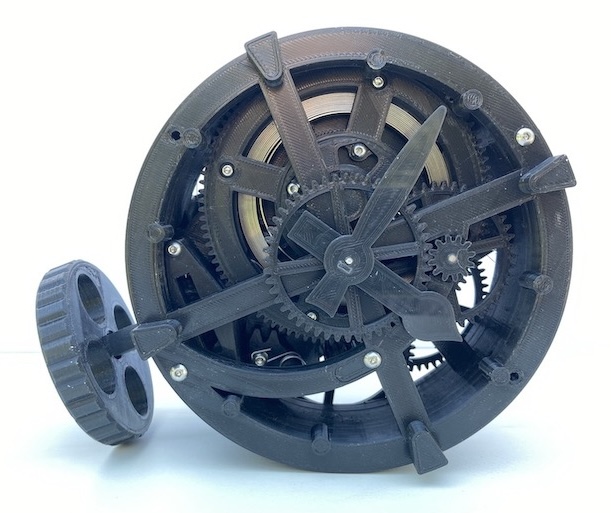My 3D printed history of clocks
Antic Clocks
Verge and Foliot
The Verge and Foliot is the first known mechanical clock and was invented in the late 13th century
There is usualy only an hour hand, the verge and foliot was not very precise, it is not uncommon to have up to an hour of variation per day
Files on My Mini Factory: https://www.myminifactory.com/object/3d-print-antic-clock-120280
The build video: https://youtu.be/oX5HK5Vc9do
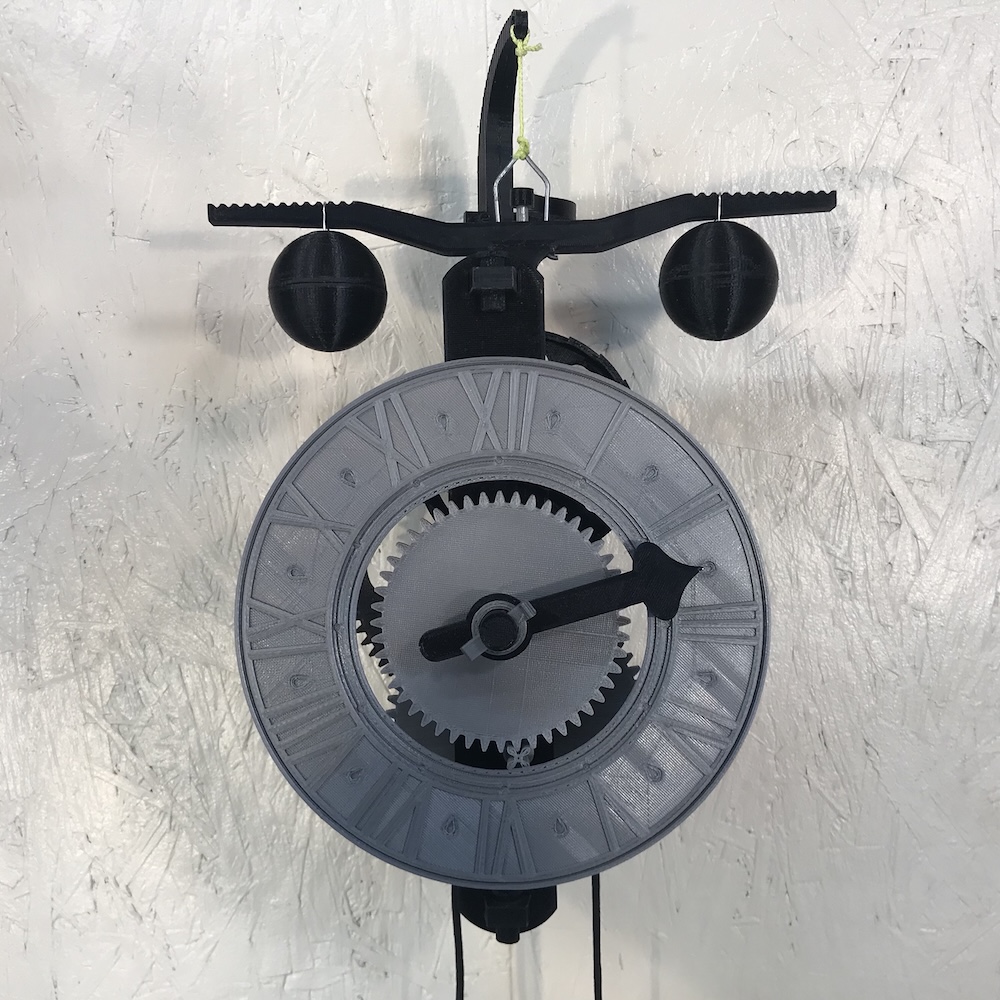
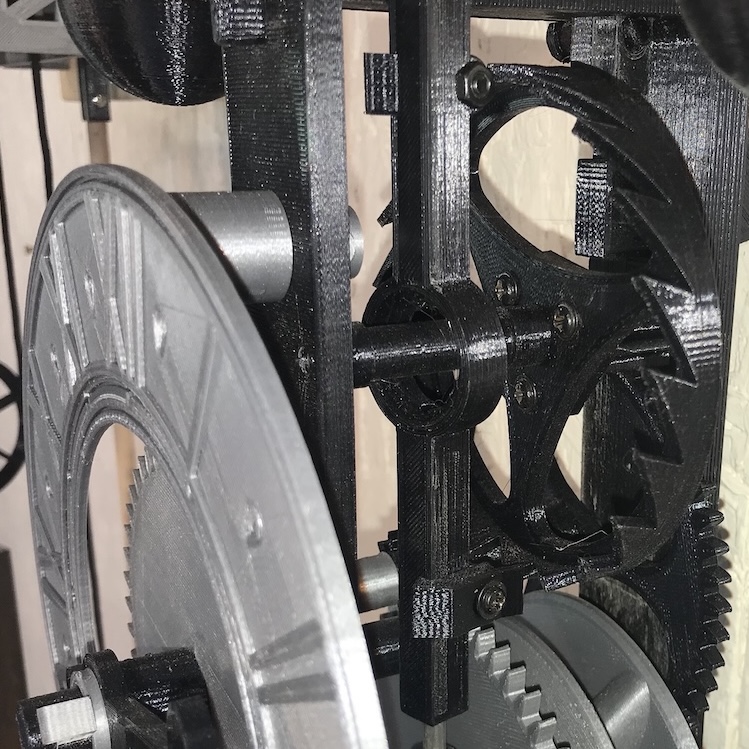
Galileo Escapement
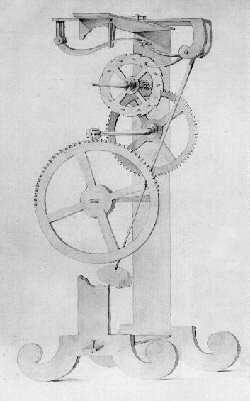
A pendulum to regulate a clock
Galileo Galilei (1564 – 1642) is the first to have the idea of using a pendulum to improve the accuracy of clocks
The last year of his life, he explained his idea to Vincenzo Viviani, and this drawing made it to posterity
Learn more about the Galileo escapement here:
https://en.wikipedia.org/wiki/Galileo%27s_escapement
Illustration:
Vincenzo Viviani, Public domain, via Wikimedia Commons
https://upload.wikimedia.org/wikipedia/commons/8/8c/Galileo_Pendulum_Clock.jpg
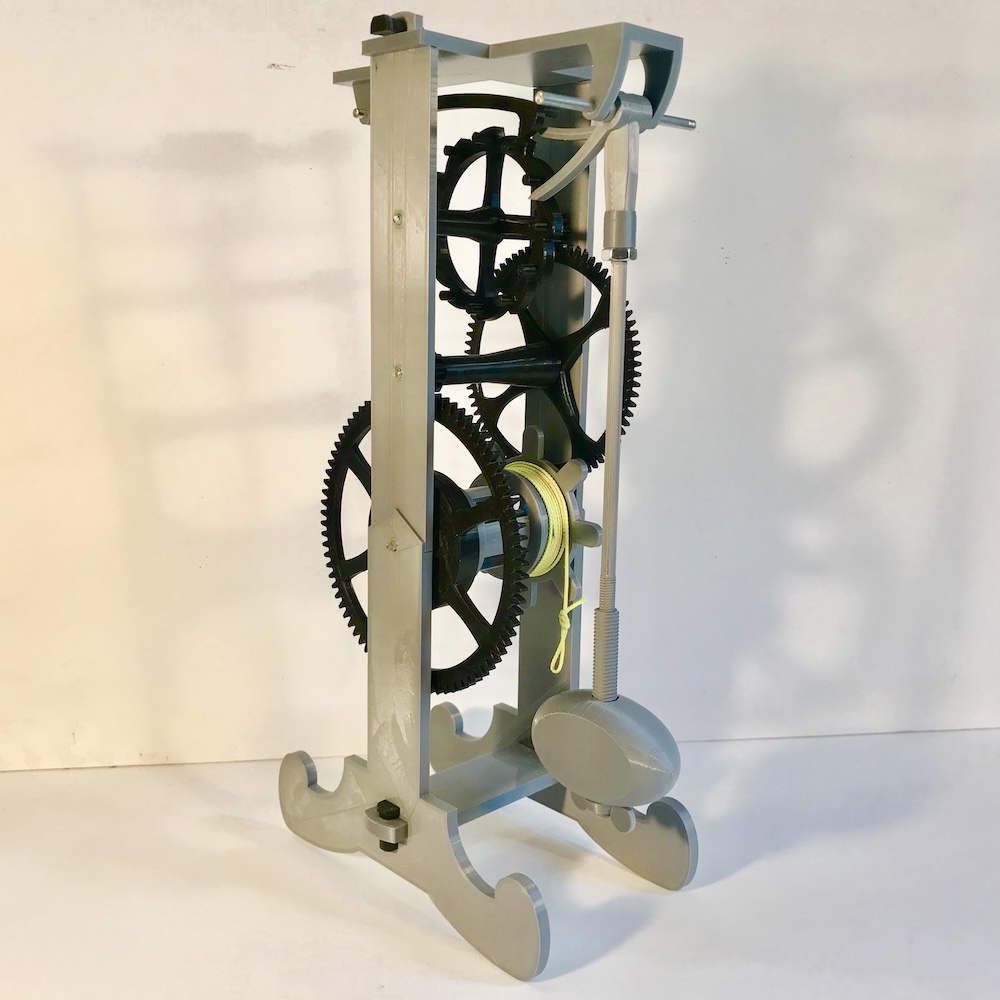
Basic Galileo Escapement
Files on My Mini Factory here:
https://www.myminifactory.com/object/3d-print-galileo-escapement-clock-134135
Build Video: https://youtu.be/P4vbKGWxwiM
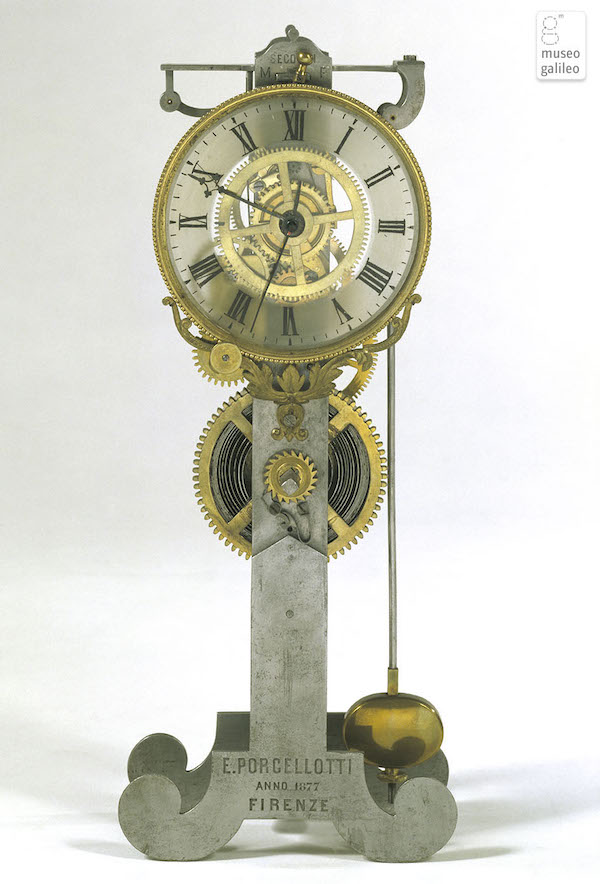
https://catalogue.museogalileo.it/object/ModelApplicationPendulumToClock.html
“Courtesy of Museo Galileo”
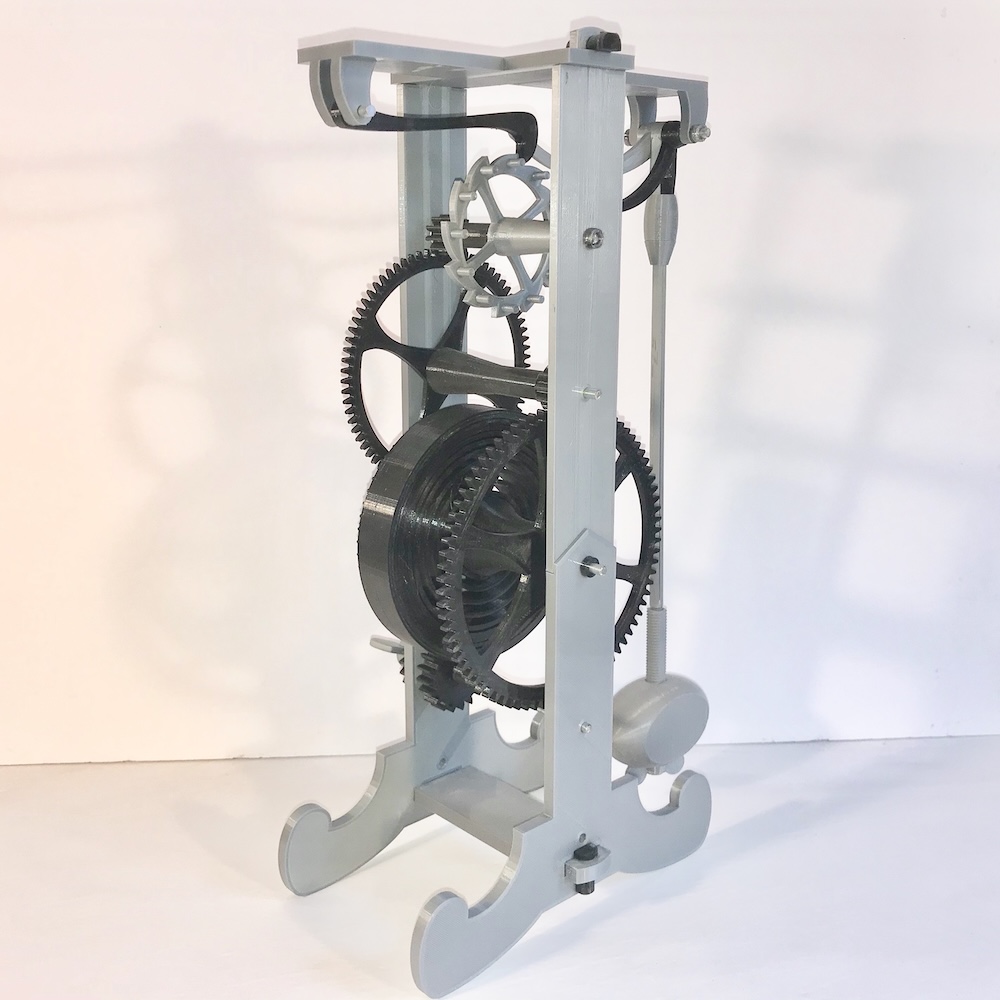
Galileo Escapement
Files on My Mini Factory here:
Build video: https://youtu.be/8zhmghJZEnQ
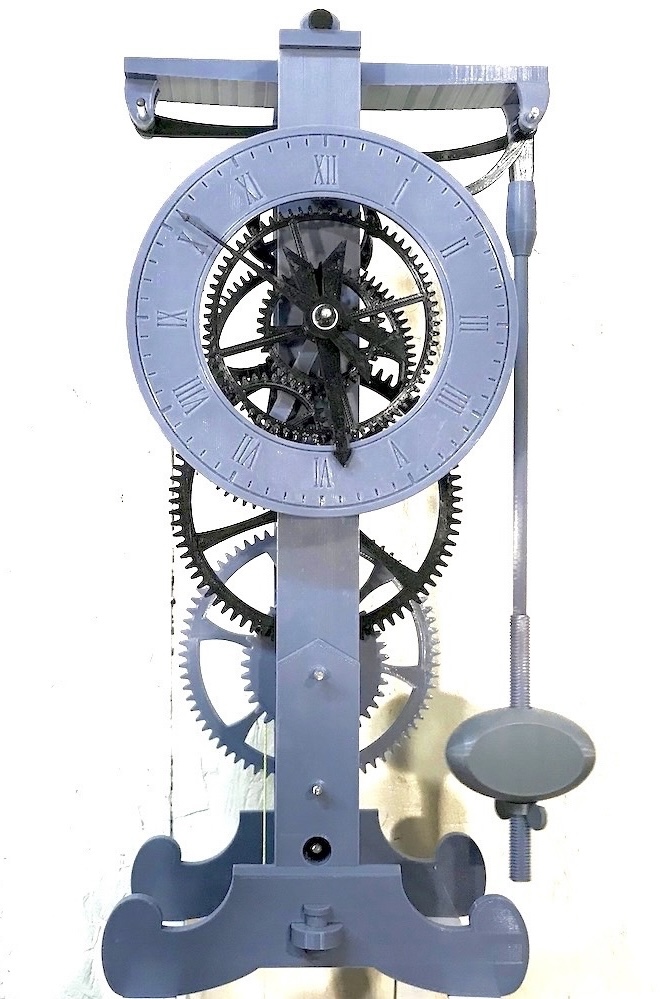
Replica based on the clock built in 1877 by the Florentine clockmaker Eustachio Porcellotti
Files on My Mini Factory here:
https://www.myminifactory.com/object/3d-print-galileo-escapement-clock-5-174677
See it Here: https://youtu.be/1_RTch_tNSI
Christiaan Huygens Clock
A pendulum with a verge escapement
Christiaan Huygens, Dutch mathematician (1629 – 1695)
https://en.wikipedia.org/wiki/Christiaan_Huygens
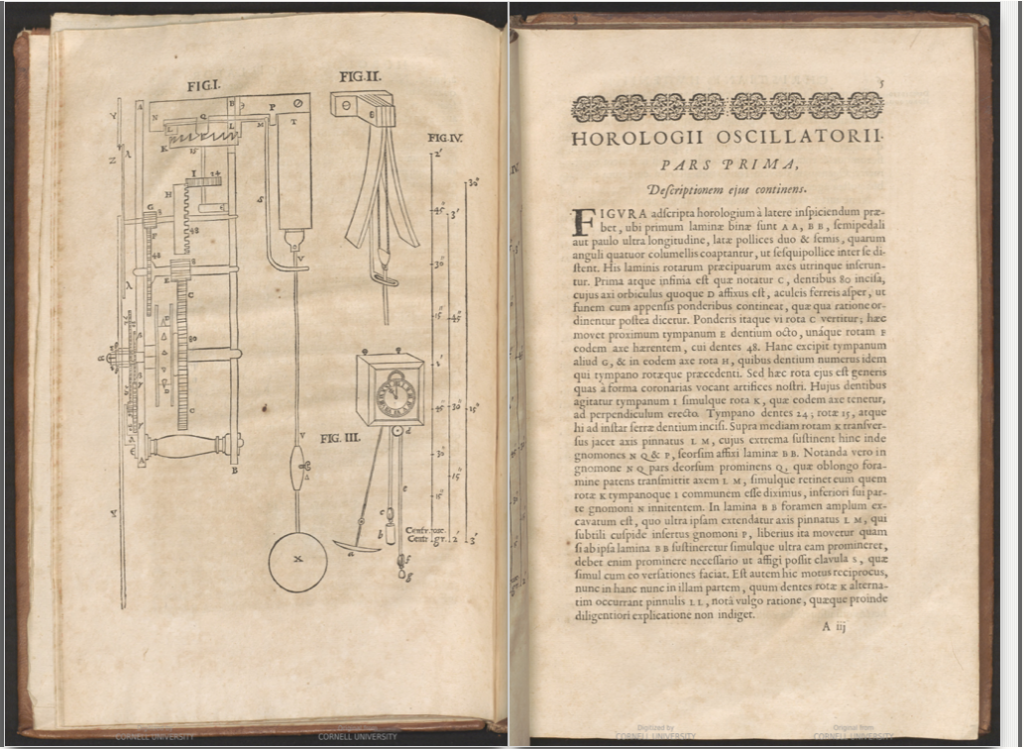
Find the original drawing here:
https://babel.hathitrust.org/cgi/pt?id=coo.31924030707909&view=2up&seq=22
https://en.wikipedia.org/wiki/Horologium_Oscillatorium
The Pendulum Clock: or Geometrical Demonstrations Concerning the Motion of Pendula as Applied to Clocks
Description of the clock and mathematical analysis of the pendulum, published in 1673
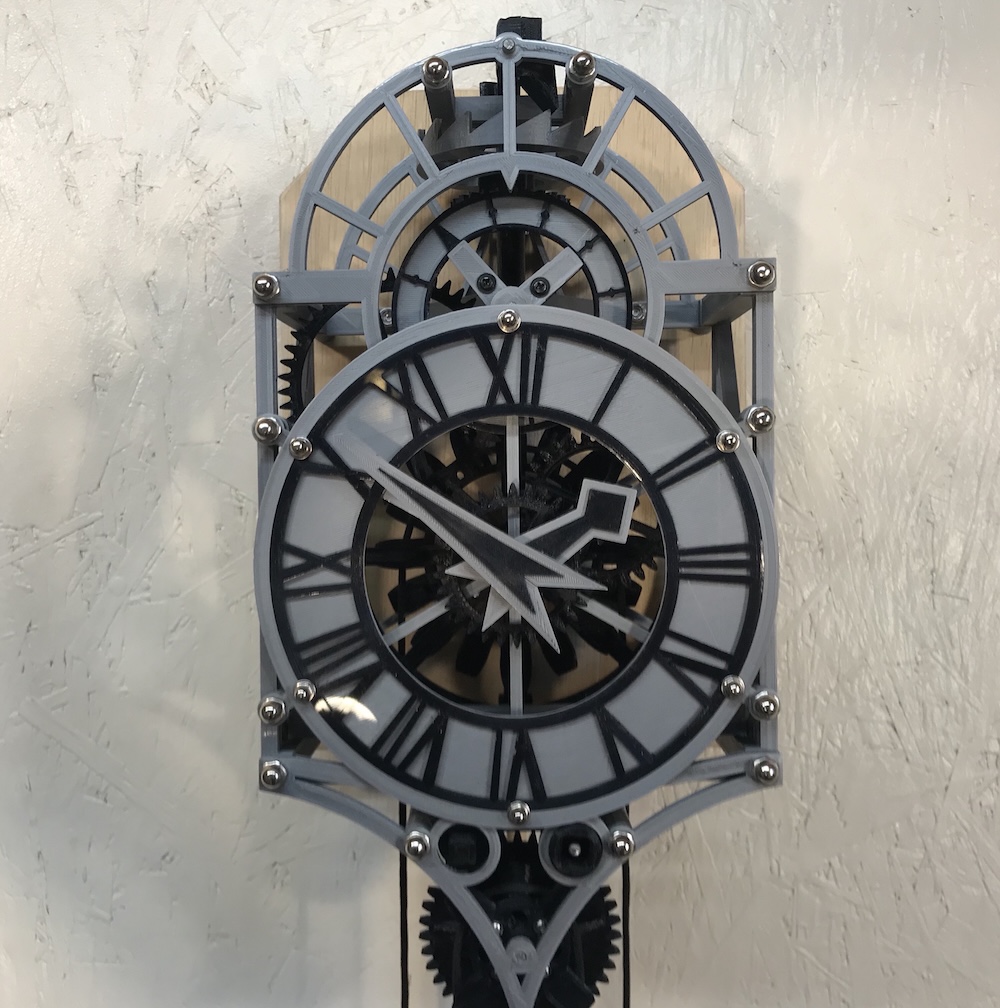
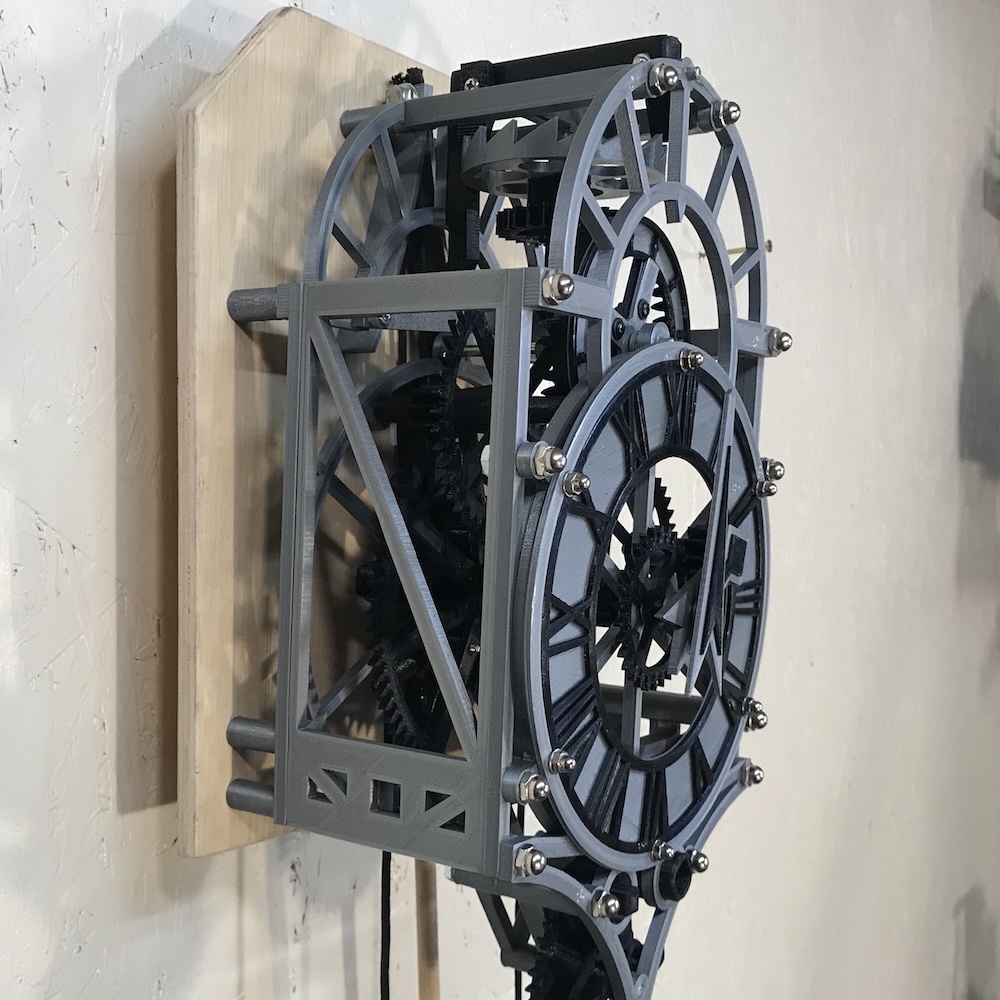
Files on My Mini Factory here:
https://www.myminifactory.com/object/3d-print-christian-huygens-3d-printed-clock-114784
Build Video: https://youtu.be/jhgWEC3bLCI
Follow up: https://youtu.be/TT0yUgxwWnI
Grasshopper Escapement
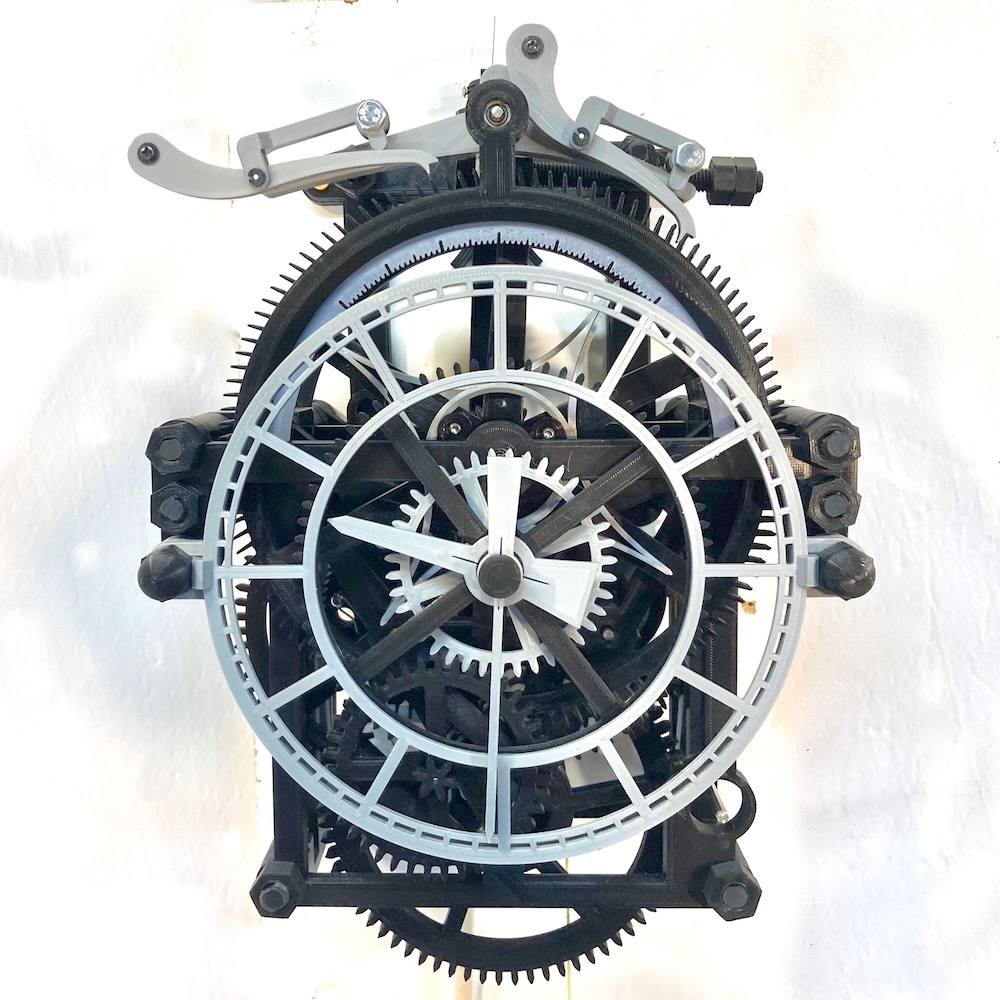
Twin Pivot Grasshopper escapement
John Harrison (1693 – 24 March 1776)
https://en.wikipedia.org/wiki/John_Harrison
He invented this escapement around 1722 as an attempt to improve the accuracy of time keeping
He made multiple attempt to solve the longitude at sea issue
After trying with clocks, he built a watch that went on its first trial at sea on 1762
The longitude prize was finally awarded to him in 1773
Meanwhile he continued to engineer regulators clock and claimed that his clock will be as precise as within 1 sec for 3 month. He died before he could finish
A modern replica has proved that he might have been right, The full story is in this book:
Harrison Decoded: Towards A Perfect Pendulum Clock
This blog post offers a resume of the story
Files for my design on My Mini Factory:
https://www.myminifactory.com/object/3d-print-grasshopper-clock-184260
See it here: https://youtu.be/TrXwS0jcLvQ
Anchor Escapements Clocks
Recoil Escapement Clock
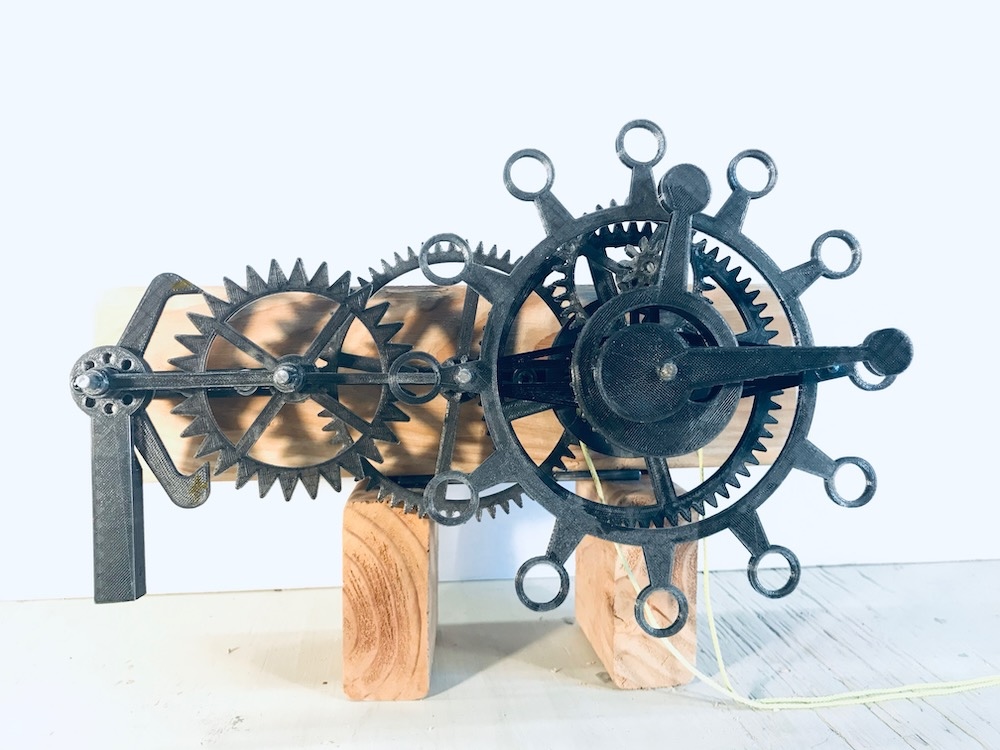
The First Clock
Feature a recoil escapement anchor invented around 1657
The frame is modular and need a support. It is one of my first design and is an easy clock to get started
Files on My Mini Factory:
https://www.myminifactory.com/object/3d-print-the-first-clock-128148
Build Video: https://youtu.be/jo9qm485yME
Graham Escapement or Dead Beat Escapement

Clock One
Feature the Graham or dead beat escapement invented in 1675 by Richard Towneley
It is very similar to the clock above, parts can be mixed or shared, it adds a small second dial
It is another easy clock to get started
Files on My Mini Factory:
https://www.myminifactory.com/object/3d-print-clock-one-108295
See the clock running: https://youtu.be/wh0CArhOsug
Watch Movements
Swiss Lever Escapement
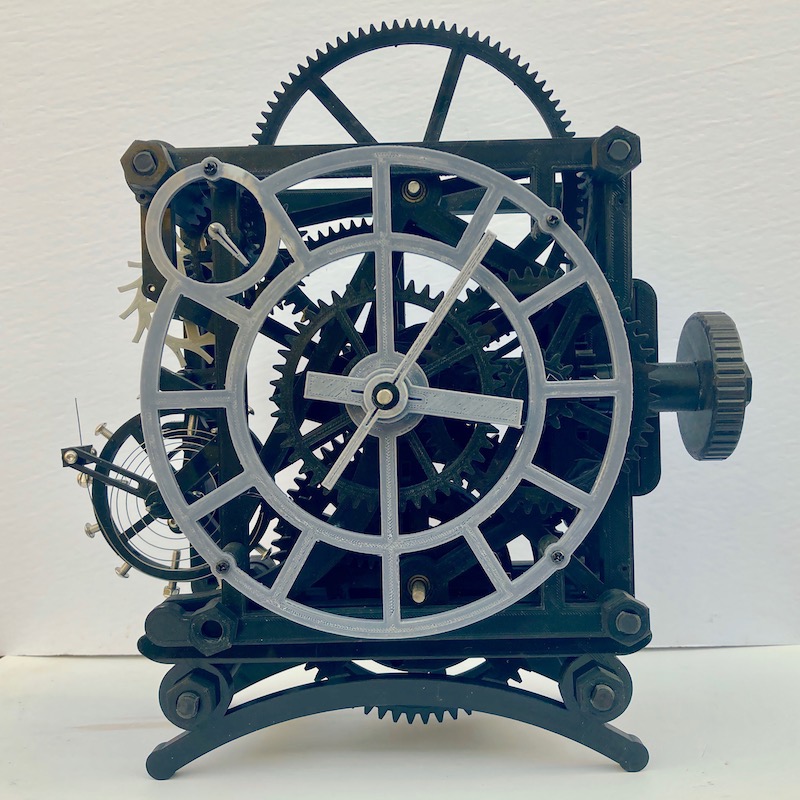
Close up of the escapement
Invented between 1750 and 1800, it is now the most common escapement used in watches
https://en.wikipedia.org/wiki/Lever_escapement
This simplified movement will run for 6 to 8 hours
The 3 positions crown will rewind the main spring and allow to set the time
The beat is 0,666 second or 5400 BPH
The Build video: https://youtu.be/Mu2qkiVbR40
The escapement: https://youtu.be/kc545ejjyy0
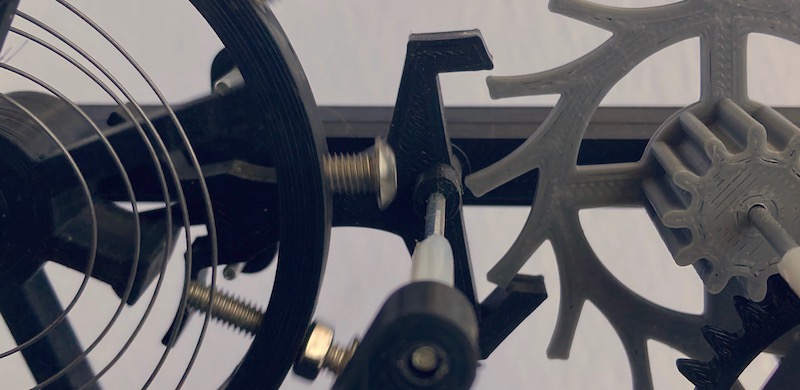
Roskopf watch
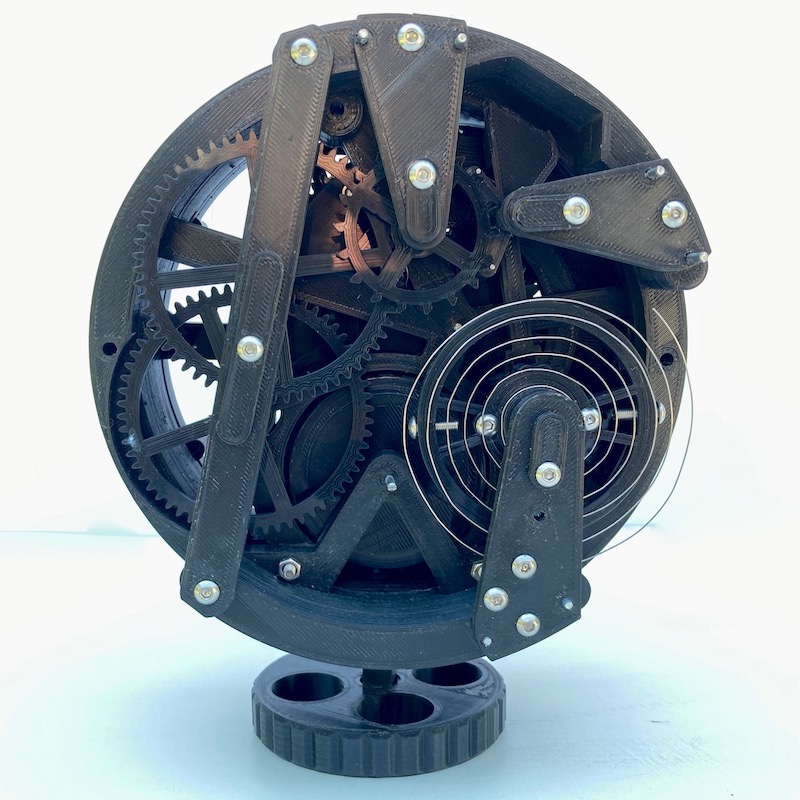
Runs for 6 to 8 hours
The beat is 0,4 second or 9000 BPH
Hand made spiral sprind made with 0.4 mm piano wire
Georges Frederic Roskopf (1813 – 1889)
https://en.wikipedia.org/wiki/Georges_Frederic_Roskopf
He designed a watch for the proleterian, one that his workers could afford
Check out his biography and the watch description here: http://www.watkinsr.id.au/buffat.html
See it here: https://youtu.be/cJS78owSTOc
